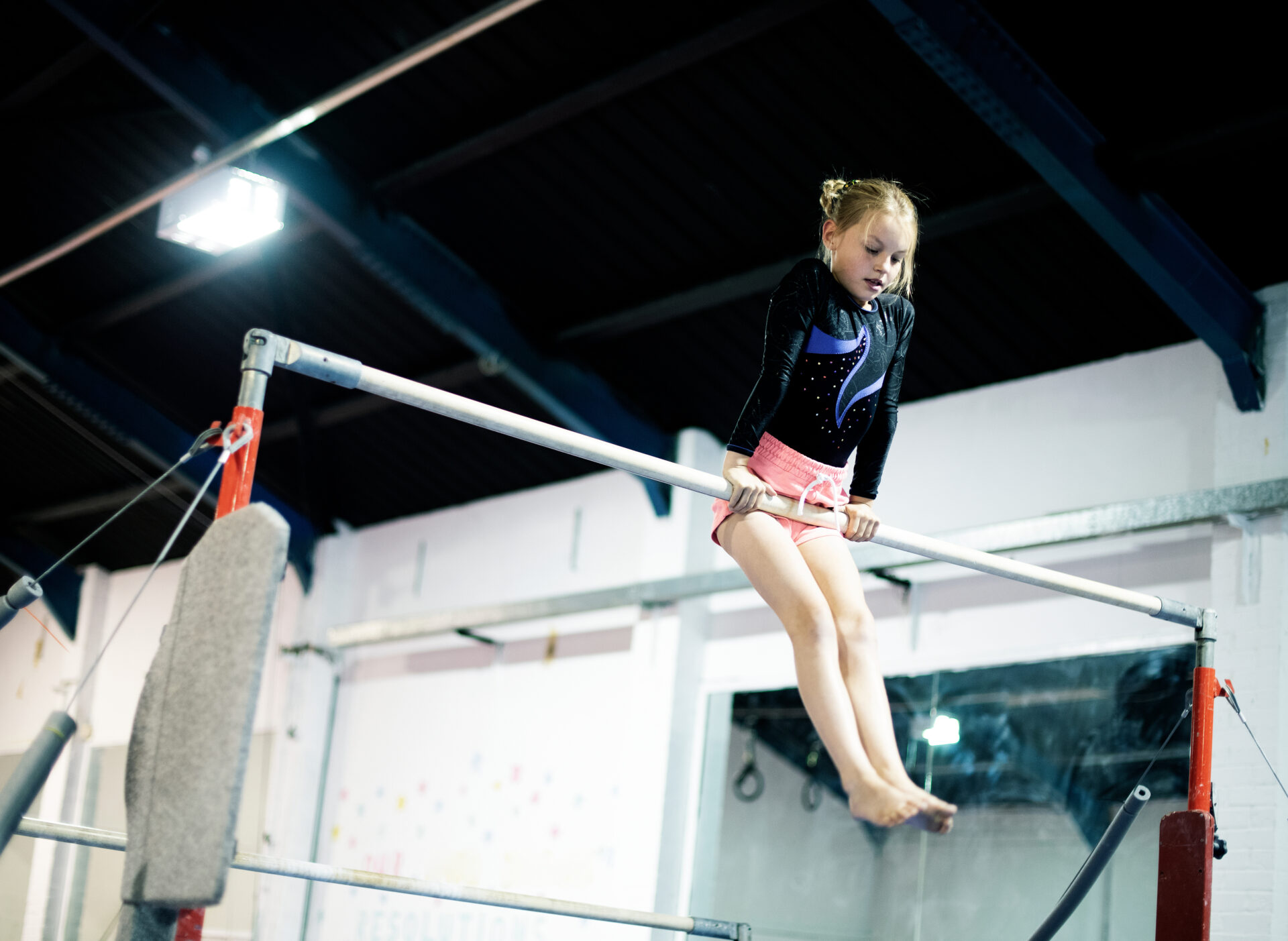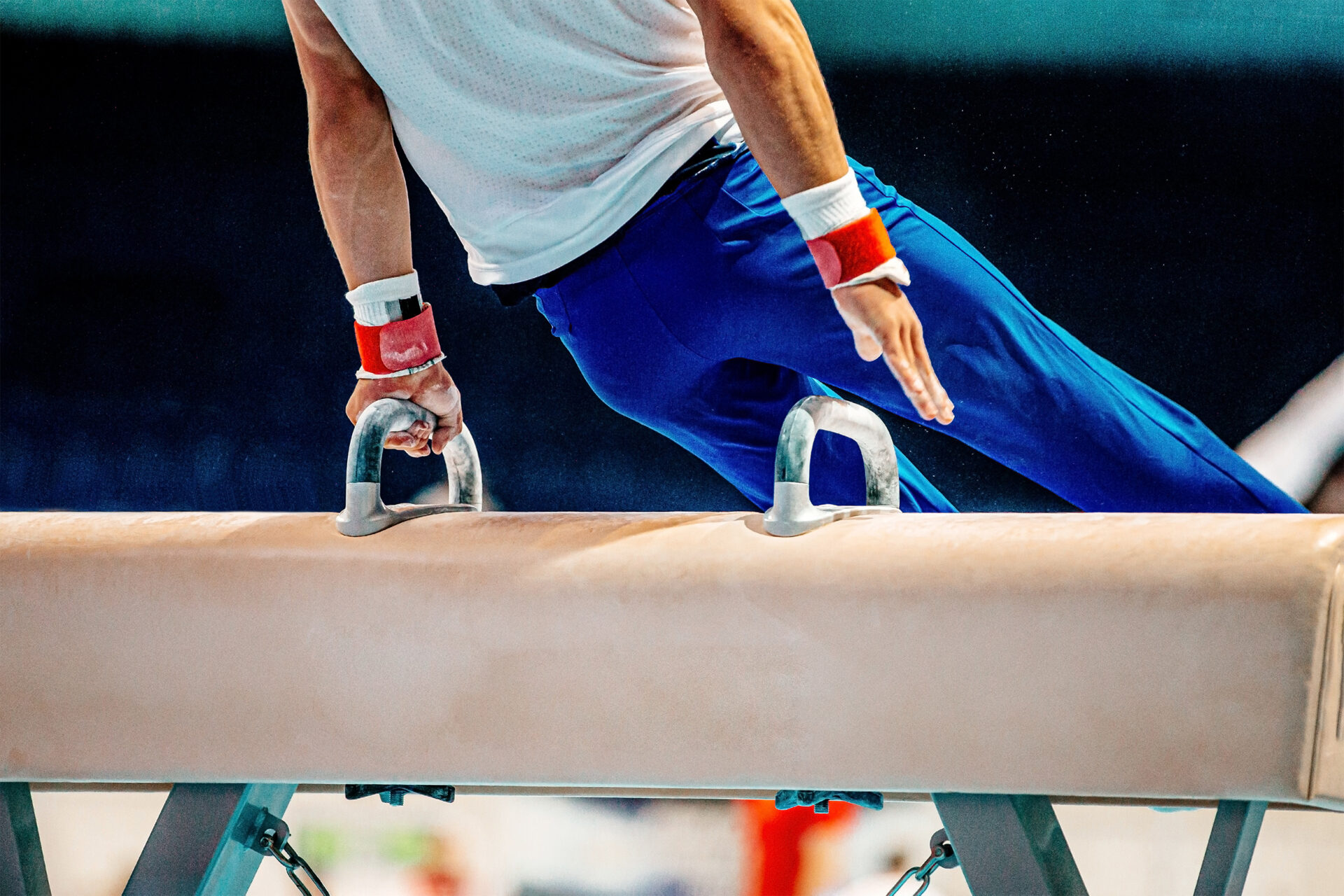As the excitement of the 2024 Olympic Games captivated the world, gymnastics was one of the most thrilling and physically demanding sports on display. With its combination of strength, flexibility, and precision, gymnastics places extraordinary demands on athletes, particularly young gymnasts. However, with these demands comes an increased risk of injury, especially to the shoulders and elbows. Gymnasts, particularly children, adolescents, and young adults, are at a higher risk for these types of gymnastics injuries, underscoring the importance of early detection and treatment. At AOSMI, we support and encourage young gymnasts to pursue their passion, whether competitively or recreationally. If your child experiences pain or injury from gymnastics, our team is here to provide expert care and help get them back to the sport they love.
About the Author – Stacey Gallacher, MD, FAAOS, is a Board-Certified Orthopedic Surgeon specializing in shoulder and elbow surgery, with dual Fellowship training in Shoulder & Elbow Surgery and Trauma. With specialty training in trauma, Dr. Gallacher provides trauma care for adult fractures, including reconstruction and replacement of complex shoulder and elbow fractures. She strives to provide a comprehensive approach to recovery including both non-surgical and surgical techniques to minimize pain and restore function. A former Division I collegiate athlete herself, she is passionate about helping patients maintain an active lifestyle, and enjoys cycling, surfing, and yoga in her personal time. Dr. Gallacher is also active in academic pursuits, serving as a member of the AAOS, and Assistant Editor for the Journal of Shoulder and Elbow Arthroplasty.
Gymnastic Shoulder Injuries – Labral Tears
The labrum is a ring of cartilage that stabilizes the shoulder joint. Tears can occur from repetitive overhead movements or acute trauma, leading to pain, instability, and decreased performance.
Causes:
- Common Events: Rings, uneven bars, and vaulting.
- Mechanisms: Repetitive stress from overhead movements, falls, or sudden jerks during dismounts.

Orthopedic Treatment:
- Non-surgical Management:
- Physical Therapy: Initial focus on reducing inflammation and pain. Specific exercises aim to strengthen the rotator cuff and shoulder stabilizers to improve joint stability and prevent further injury.
- Anti-inflammatory Medications: NSAIDs (nonsteroidal anti-inflammatory drugs) are often prescribed to manage pain and reduce inflammation.
- Activity Modification: Temporary avoidance of movements that exacerbate the condition, with a gradual return to full activity under supervision.
- Surgical Options:
- Arthroscopic Repair: In cases of severe or persistent tears that do not respond to conservative treatment, minimally invasive surgery may be necessary to repair the torn labrum and restore stability to the shoulder joint.
- Post-Surgical Rehabilitation: Following surgery, an individualized physical therapy program focuses on restoring full range of motion, building strength, and gradually reintroducing sport-specific activities.
Gymnastic Shoulder Injuries – Growth Plate Injuries
Growth plate injuries occur when repetitive stress impacts the growth plate of the upper arm bone (humerus) in young athletes. This can lead to pain and may affect bone growth if not managed properly.
Causes:
- Common Events: Repeated overhead motions in events like uneven bars and high bar
- Mechanisms: Continuous stress on the growth plate from repetitive overhead movements, particularly in growing athletes.

Orthopedic Treatment:
- Non-surgical Management:
- Rest and Activity Modification: Essential to allow the growth plate to heal. Young gymnasts should temporarily cease activities that involve overhead motions.
- Physical Therapy: Once pain decreases, physical therapy focuses on correcting mechanics to reduce stress on the growth plate. Strengthening exercises for the shoulder girdle and core help distribute forces more evenly.
- Monitoring: Regular follow-ups to ensure the growth plate heals properly and to avoid long-term complications.
Gymnastic Elbow Injuries – Elbow Dislocations
An elbow dislocation occurs when the bones of the elbow are forced out of alignment, typically due to a fall or direct impact. This injury can damage the surrounding ligaments, nerves, and blood vessels.
Causes:
- Common Events: Vault, pommel horse, and beam.
- Mechanisms: Falls onto an outstretched arm or direct impact during high-impact moves.

Orthopedic Treatment:
- Reduction: Immediate realignment of the dislocated elbow is critical to restoring joint function and preventing further damage.
- Immobilization: After reduction, the elbow may be immobilized in a splint or sling for several weeks to allow the ligaments to heal.
- Surgical Intervention: In cases where there is significant ligament damage or associated fractures, surgery may be required to repair the soft tissues and stabilize the joint.
Gymnastic Elbow Injuries – Elbow Growth Plates Injuries (Apophysitis)
Apophysitis refers to inflammation of the growth plate, often due to repetitive stress. In gymnasts, this condition frequently affects the growth plates in the elbow, leading to pain and potential long-term issues if untreated.
Causes:
- Common Events: Pommel horse, uneven bars, and rings.
- Mechanisms: Repetitive weight-bearing activities that place stress on the elbow growth plates.

Orthopedic Treatment:
- Rest and Activity Modification: Crucial to allow the growth plates to recover. Gymnasts may need to avoid or modify activities that put stress on the elbows.
- Physical Therapy: Focus on exercises that relieve stress on the growth plates and enhance flexibility and strength in the surrounding muscles. Education on proper technique is essential to prevent recurrence.
- Monitoring: Regular assessments to track recovery and ensure that the growth plates are healing without complications.
Physical Therapy for Gymnastics Injuries
Physical therapy for gymnastic injuries focuses on a phased approach, beginning with pain management and inflammation reduction, typically using techniques like ice, manual therapy, and gentle range-of-motion exercises. As pain subsides, therapy progresses to strengthening the shoulder, elbow, and surrounding muscles. This phase includes proprioceptive training and sport-specific drills to enhance stability and prevent re-injury. Corrective exercises and technique refinement are emphasized, especially for young athletes, to minimize stress on growth plates and prevent future injuries. At AOSMI, we have a team of expert physical therapists for you to work with, so you can get back to the gymnastics sports you love.
Preventive Measures for Gymnastics Injuries
Proper warm-up and conditioning routines are essential to prepare the body for the physical demands of gymnastics. Using appropriate techniques during practice and competition can significantly reduce the risk of injury. Coaches and healthcare providers should work together to monitor the health of gymnasts and adjust training as needed to prevent overuse injuries and other common gymnastics issues.
Recover from Gymnastics Injuries with Comprehensive Orthopedic Care at AOSMI in New Jersey!
Understanding common gymnastics injuries and the importance of a team-based approach to treatment is crucial for the long-term health and success of young gymnasts. By addressing injuries early and adhering to preventive measures, gymnasts can stay healthy, competitive, and continue to enjoy the sport they love. If you or your child is experiencing shoulder and elbow pain or injury from gymnastics, request a consultation with Dr. Gallacher and our team of orthopedic experts today!







